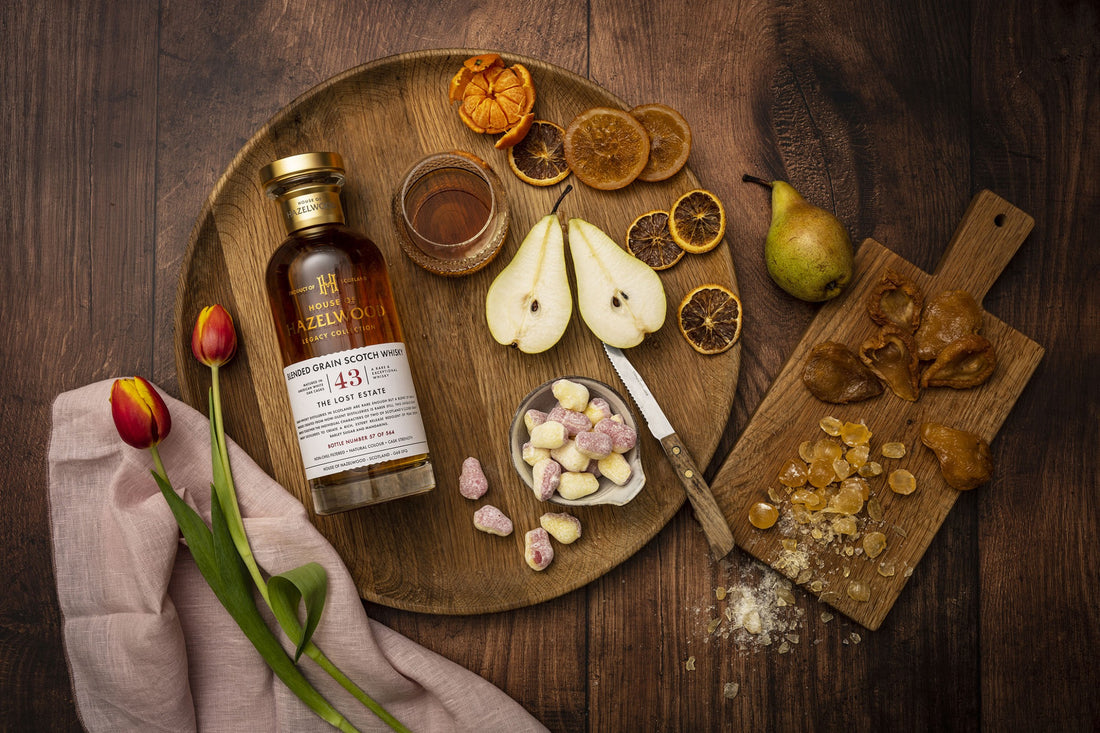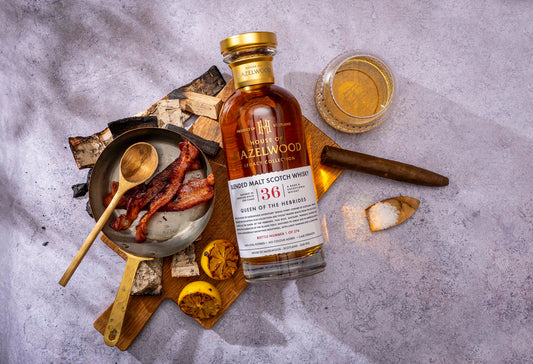Fermentation is a pivotal part of the whisky-making process – giving birth to esters –one of the most significant influences on the final flavour of a Scotch Whisky. In this feature, we take a deep dive into the world of esters and whisky.
From the distillation process to the final casks selected for a lengthy slumber, the flavour of a Scotch whisky is influenced throughout the entire production process. But, with the fermentation of wort (the liquid produced from grain), comes enormous possibilities in the emergence of bold, distinctive and at times curious flavours, all thanks to enigmatic esters.
What is an ester?
An ester is an organic chemical compound that typically arises in the fermentation stage of whisky making. Esters are not exclusive to the world of spirits, though – they can occur in any situation where an alcohol bonds with organic (carboxylic) or fatty acids through condensation, creating a loss in water molecules. Everyday esters can be found in naturally in the likes of orchard fruit such as apples, identifiable by their sweeter aroma – and even in the non-edible items such as nail polish, solvents or perfume.
In the fermentation of whisky making, the strain of yeast used can produce different acids, and as such yield a wide breadth of flavours, with most notable chemical reactions interacting directly with the yeast. Some reactions may take place within the wort although at a lesser scale, and further esters yet may be created during distillation, with the resulting fermentation liquid – known as the wash - producing more through the condensation of vapours.
The final opportunity for the emergence of esters in whisky making lies within cask maturation, with the evaporation of new make spirit in wood through the Angel’s Share. At this stage the emergence of rancio flavours, such as forest floor within a whisky are far more likely to occur.

The longer whisky lies within cask, the greater the possibilities for flavour – an important consideration for the development of these types of flavours in particularly aged whisky. Take the The Old Confectioner’s, a 44 Year Old Blended Malt Whisky, as an example of this: a delicate balance of liquorice notes combined with those aforementioned rancio flavours: leather and old wooden counter-tops, conjuring a sense of old-style Wonka-esque sweet shops.
The science behind esters may appear to be complex in nature, but when it comes to identifying these aromatic compounds within a Scotch whisky, you need be no more than an amateur sleuth to successfully seek out the most prolific ones. In the case of whiskies such as The Unknown, a 44-Year-Old Blended Scotch Whisky, where very little provenance beyond the basic distillation and maturation facts are known, engaging our inner aromatic archaeologist may just help to unravel a little more of the mystery.

A Not-So-Pear-Shaped Mystery
The positive identification of esters is perhaps easiest in the presentation of fruity notes. There’s no finer example than The Lost Estate, a 43-Year-Old Blended Grain Scotch Whisky, from the Legacy collection, where the official tasting notes denote “a rich, estery release redolent of pear drops, barley sugar and mandarins”.
It comes as no surprise that the complimentary food pairing is pear itself, to enunciate these aromatic qualities. Much like The Unknown, The Lost Estate itself is shrouded in mystery, with its components the marriage of two of Scotland’s late great grain distilleries – their origins kept secret, never to be revealed.
With such a prevalence of orchard and citric aromas, however, we can make our best guess at the esters within – with the orange-led properties likely coming from the creation of an alcohol featuring eight carbons, named as Octyl, combined with acids with lesser carbons – such as methanoate (one), ethanoate, (two) or propanoate (three.)
In contrast, the pear esters are far more likely to be derived from a shorter chain of carbons – propyl (three) in combination with ethanoate or butanoate (four).

A Curious Conundrum of Mint
From time to time, the emergence of unexpected flavours beyond the fruity, spicy and smoky stalwarts of a Scotch whisky may themselves hold esters accountable.
Herbaceous or grassy notes are no strange feature within Lowland-style whiskies – these light representations of rolling hillsides and meandering hills could be considered the epitome of this Scotch whisky region.
But where a Blended Grain is concerned, the emergence of mint is enough to whet a palate of curiosity– and this is exactly what has occurred with A Breath of Fresh Air, a 37-Year-Old Blended Grain Scotch Whisky from the Legacy Collection.
Described as “wonderfully fresh, with notes of spearmint, pineapple, crushed mint and dock leaf”, this expression could be left a mentholic mystery without the aid of chemistry to explain this presentation.
This emergence of mint, one of the less common esters, is most likely to have formed in the fermentation stage of one, or multiple components of this Blended Grain. In comparison to its fruity peers, the minty composition is instead likely to feature a shorter chain of carbons within the alcohol proportion – propyl – combined with longer chains in the form of salicylate (from salicylic acid) and its herbaceous qualities from longer chains of both alcohol and acids, such as heptyl (seven) and hexanoate (six).
Esters and Whisky: The Need for Careful Craft
Even with the masterful manipulation of yeast, distillation and maturation, there are several additional factors, such as temperature and airflow which could influence the development of esters, as in seen in our recent article, the unexpected maturation of a rare old Scotch whisky.
Of course, great care and guardianship must be exercised over Scotch whisky which slumbers in casks for decades. Without the regular monitoring of such slumbering spirit, unguided fermentation, distillation and maturation could lead to the evolution of some outright bizarre esters – such as the parsnip-like octyl butanoate or the PVA-glue-like ethyl ethanoate!
Such monitoring is integral to our whisky making philosophy – it’s ready when it’s ready – and the balancing act of nurturing between esters and whisky is just one small, but critical, part of the alchemy.




